Hive has long been a powerful workspace, yet even the most advanced platform can miss the mark for some teams. If you need a Hive alternative in 2025, start by defining your goals: faster performance, lower cost, clearer reporting or built-in AI. This guide covers ten solutions that can replace Hive, with special focus on Worksection because the service bundles advanced features into every plan — something users often miss in Hive’s paid upgrades. From visual Kanban boards and Gantt charts to a full time-tracker and tight permission control, Worksection delivers everything “out of the box.” Still, the other tools also shine: ClickUp offers unmatched flexibility, Asana pushes automation, Wrike excels at analytics, while Trello remains the champion of simplicity. You’ll find a comparison table, hands-on advice and an FAQ to help you pick the perfect Hive alternative for your team.
Why Do People Look for Hive Alternatives?
Hive’s early success came from its “everything in one tab” mantra, but by 2025 teams have raised a few red flags. First, the interface can feel overloaded: once you cross dozens of projects, each board refresh costs precious seconds and view switching slows down even fast laptops. Second, pricing: enabling time reports or advanced roles forces an upgrade, and the bill can jump to $20 – 24 per user per month. Newcomers find setup tricky — too many menu items make it easy to pick the wrong view or tangle permissions. Enterprise users also note scaling issues: with thousands of tasks Hive loses its snap, and built-in automation can’t always cover complex workflows. These pain points push teams toward a Hive alternative that combines a friendly UI, high speed, fair pricing, and full functionality without hidden fees.
Key Criteria for Choosing a Hive Alternative
To keep this list honest, we focused on six essentials:
- Visualisation. Kanban boards, Gantt charts and timelines must work lag-free, not just tick a feature box.
- Performance. Project and filter loading time should stay low no matter how many cards you hold.
- Reporting. Automatic time, workload and cost reports eliminate the need for Excel exports.
- Ease of adoption. The UI should feel intuitive so newcomers ramp up in a day or two.
- Cost. Ideally the entry plan covers 80 % of features and stays under $10 per user per month.
- AI features. In 2025 teams expect smart deadline suggestions, meeting summaries and task generation from chat.
The Best Hive Alternatives for 2025
Worksection
Worksection stands out by shipping every core feature — from Kanban and Gantt to a built-in timer — on the very first plan. Teams can switch between list, board or timeline views, while files, checklists and comments live inside each task so nothing gets lost. Flexible permissions let you invite clients yet hide internal discussions. Detailed time-and-cost charts appeal to agencies, and at just $4.5 per user per month the platform never asks you to “unlock” modules the way Hive does. Optimised architecture keeps boards snappy even with thousands of tasks.
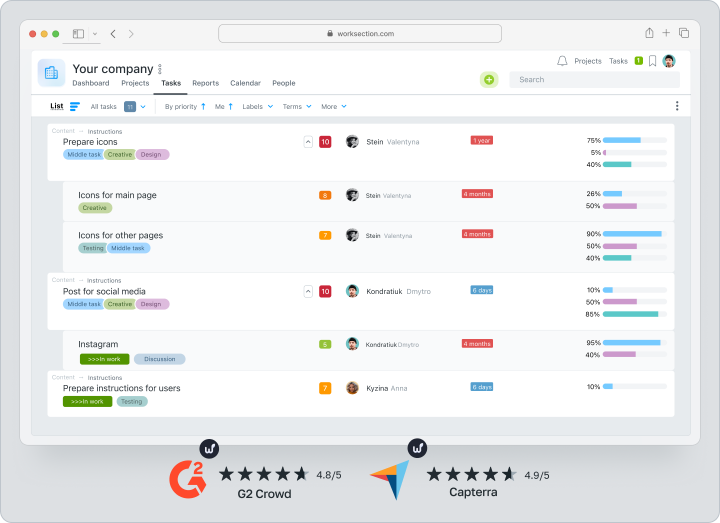
ClickUp
ClickUp follows a “configure everything your way” philosophy. Users hop between board, list, calendar, mind-map and workload widgets. Automation is powerful: set a trigger and new tasks instantly pick up a deadline and assignee. The free tier looks generous, but full reports and the AI assistant cost $10 and $20, respectively. Perfect for IT teams that crave flexibility, though the abundance of options can slow onboarding.
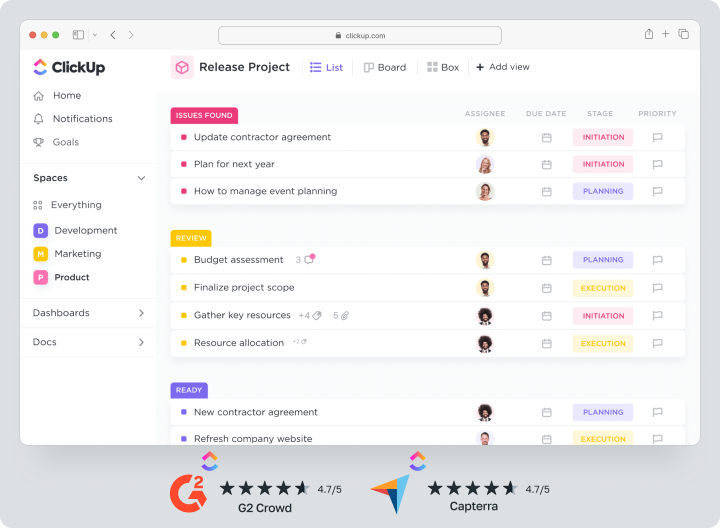
Asana
Asana banks on a clean UI and ready-made templates. Spin up a marketing calendar or Scrum board in two clicks, while rules shave hours off repetitive work. Seamless integration with Google Workspace and Slack improves communication. Yet advanced automation and project portfolios live only on the Business plan at $24.99 per user. Great for product and creative departments, but the price may sting.
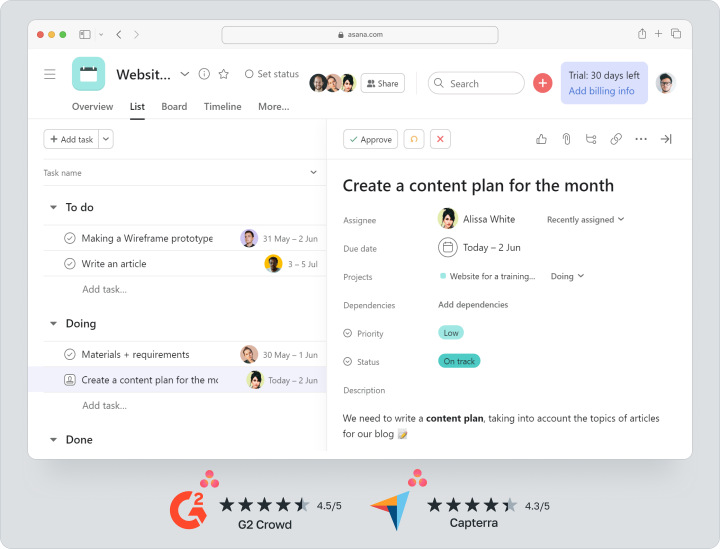
Trello
Trello remains the Kanban icon. Its minimalist UI shows task status instantly, and Power-Ups add time-tracking, feedback loops and e‑signatures. A free tier with unlimited boards draws freelancers and startups. Drawbacks: no native Gantt chart, limited reporting — serious analytics requires third-party tools. Still, Trello is ideal when you need a simple Hive alternative without heavy setup.
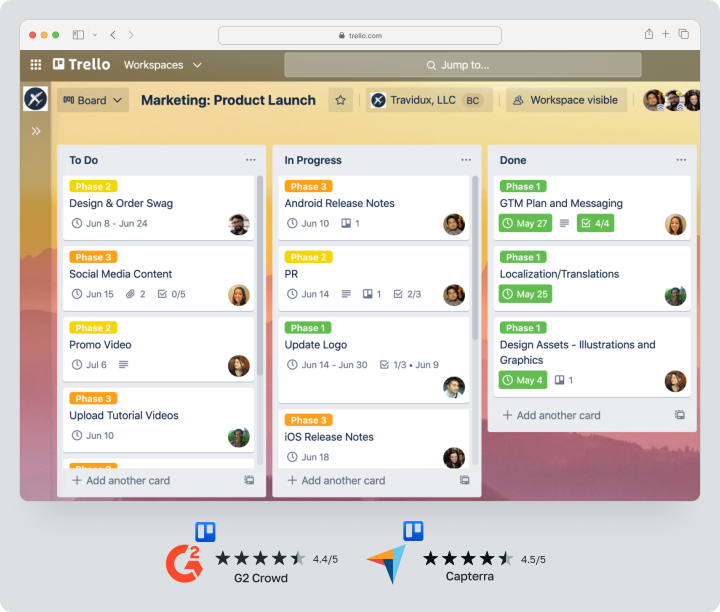
Monday.com
Monday.com markets itself as a Work OS that unifies cross-department workflows. It offers deep view customisation — from tables to world maps, handy for global teams. No-code automation uses a visual “if — then” builder. However, full integration access and time-tracking start at the Pro tier for $19/user/month, a stretch for smaller firms.
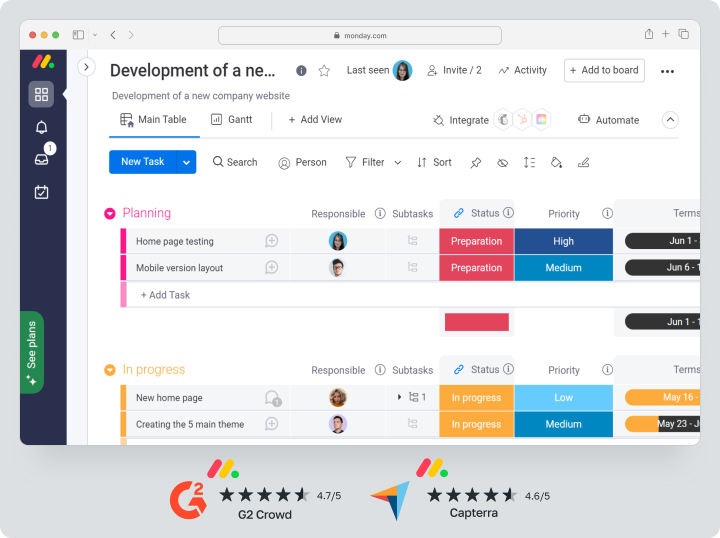
Wrike
Wrike’s strength is analytics: workload reports build automatically, and the Insights dashboard flags schedule risks. Enterprise clients value granular roles, audit logs and ISO-certified security. The learning curve is steep, but for large teams with strict SLAs Wrike trumps Hive. The Professional tier is $9.80, yet time-tracking, portfolios and the BI engine demand the Business plan at $24.80.
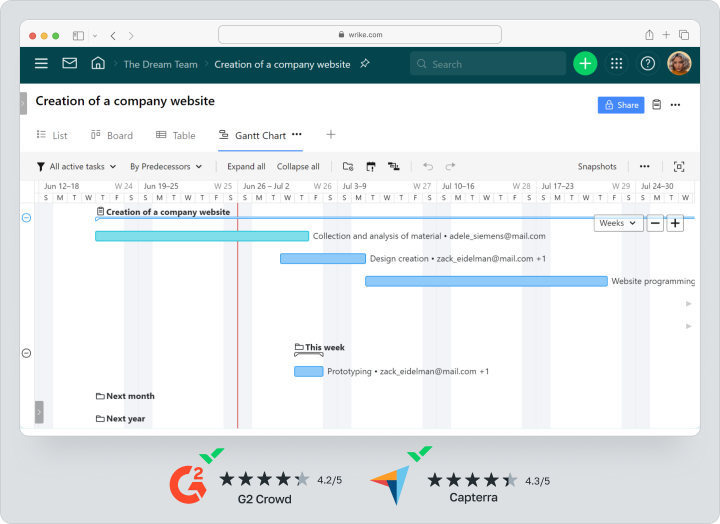
Notion
Notion fuses task tracking and knowledge management: tables, boards and wiki pages coexist in one space. Your team can keep guidelines, specs and roadmaps next to Kanban columns. Templates from the community cut launch time. Downsides: slower load on giant databases and limited classic reporting. The price is friendly, though: full API access and unlimited guests cost $8 per user.
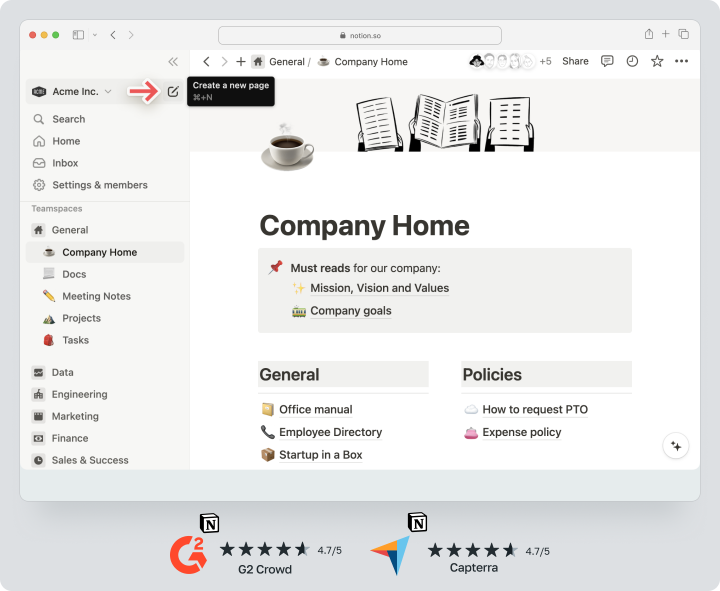
Basecamp
Basecamp sticks to minimalism: to-do lists, chat, calendar and file storage — nothing extra. A flat fee of $15/user/month (Basecamp 4) simplifies budgeting. Lack of Gantt charts and granular roles may deter complex projects, yet small teams love the quick learning curve and direct communication.
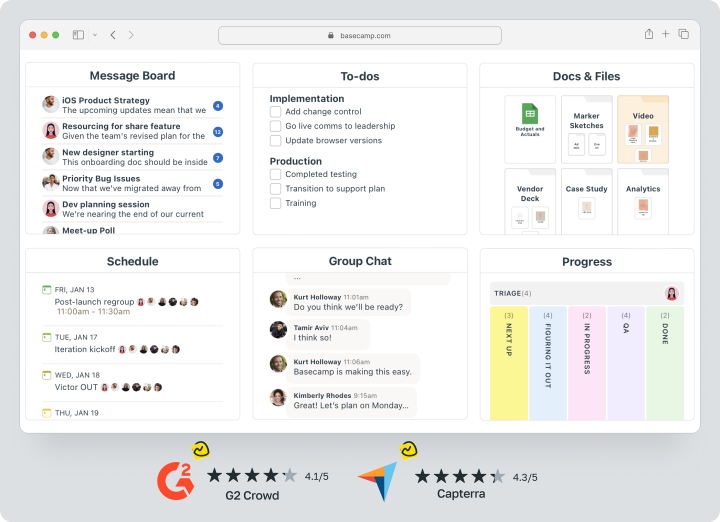
Microsoft Planner
Planner lives inside Microsoft 365, making it an obvious pick for companies already paying for Office. Tasks tie into Teams, files rest in SharePoint — one login rules them all. The UI is dead-simple, but reporting stops at a basic progress chart. For deeper analytics you’ll attach Power BI. Since Planner is included in Microsoft 365 Business Basic (from $6/month), no extra spend is required.
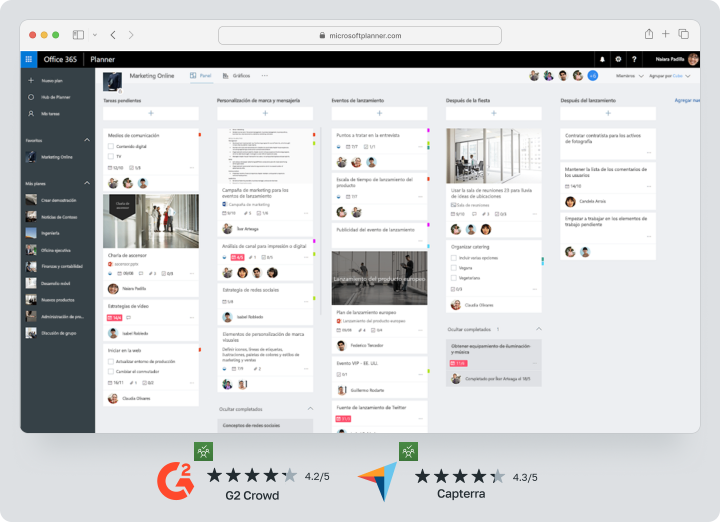
Smartsheet
Smartsheet charms spreadsheet fans: tasks appear in rows with formulas, pivot reports and linked Gantt views. The platform offers automated reminders, proof reviews and time logs. Pricing starts at $9, but resource management and portfolios push you to Business (≈$32). The Excel-like UI needs acclimatisation, yet its analytical muscle is impressive.
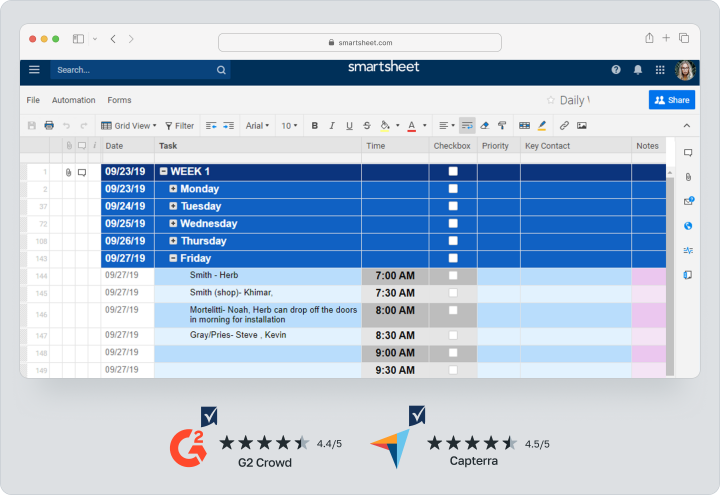
Comparison Table of the Best Hive Alternatives
| Platform | Core Strengths | UI/UX | Speed | Reporting | Base price (USD/user/mo) |
| Worksection | All features on all plans, flexible rights, built-in timer | Clean, RU/UA | High | Detailed charts | 4.5 |
| ClickUp | Extreme customisation, AI assistant | Flexible | Medium | Expandable | 10 (Unlimited) |
| Asana | Templates, rules, strong integrations | Elegant | High | Portfolios (Business) | 10.99 (Basic) / 24.99 |
| Trello | Ease, Power-Ups, free boards | Minimalist | High | Limited | 0⁄5 (Standard) |
| Monday.com | Custom views, no-code automation | Colorful | High | Pro-level analytics | 19 (Pro) |
| Wrike | Deep analytics, security, portfolios | Professional | Mid-high | BI dashboards | 9.80 / 24.80 (Business) |
| Notion | Knowledge + tasks | Flexible | Medium | Limited | 8 |
| Basecamp | Flat pricing, communication focus | Simple | High | Minimal | 15 |
| Microsoft Planner | Tight Office 365 integration | Familiar | High | Basic | 6 (in M365) |
| Smartsheet | Spreadsheet DNA, strong analytics | Excel-like | Medium | Advanced | 9⁄32 (Business) |
Which Platform Should You Choose in 2025?
Your pick hinges on priorities. Agencies needing granular time reports and clear permission control should try Worksection or ClickUp: the former offers full functionality at a bargain price, the latter unmatched workflow flexibility. Teams craving simplicity can bet on Trello or Basecamp, both ready in under thirty minutes. If reporting and complex portfolios matter most, Wrike or Smartsheet provide robust BI tools. Creative groups will enjoy Notion’s blend of knowledge and tasks, while Microsoft-centric firms can stay with Planner at no extra charge. Draft a must-have list, compare real-world costs for your headcount, then run a one-week pilot — hands-on use is the only way to see whether a Hive alternative fits your day-to-day rhythm.Frequently Asked Questions (FAQ)
Which Hive alternative suits a creative team?
If your crew mixes tasks, notes and inspiration boards, look at Notion and Asana. Notion lets you host a mood board, content calendar and Kanban view on one page, while community templates speed deployment. Asana offers marketing-ready layouts and auto-reminders that keep visual pros on schedule without bureaucratic drag.
Are there free Hive alternatives?
Absolutely. Trello, ClickUp and Worksection all provide free plans. Trello gives unlimited boards and 10 MB per file — ideal for freelancers. ClickUp’s Free Forever tier supports unlimited tasks, though AI is disabled. Worksection Free targets small teams, supplying Kanban and Gantt on one project with no feature caps; when your company grows, a paid plan costs just $4.5 per user.
How does Worksection differ from Hive?
The key difference is zero hidden upgrades. Worksection includes Kanban, Gantt, time-tracking, reports, permissions and client portals on its entry plan. In Hive, detailed analytics and advanced roles unlock only after an upgrade, pushing the fee to $24 per user. Worksection also loads large projects faster — its optimised engine keeps boards responsive with thousands of tasks. A Russian- and Ukrainian-language interface eases rollout for local teams, while the $4.5/month price tag fits small and mid-sized businesses.